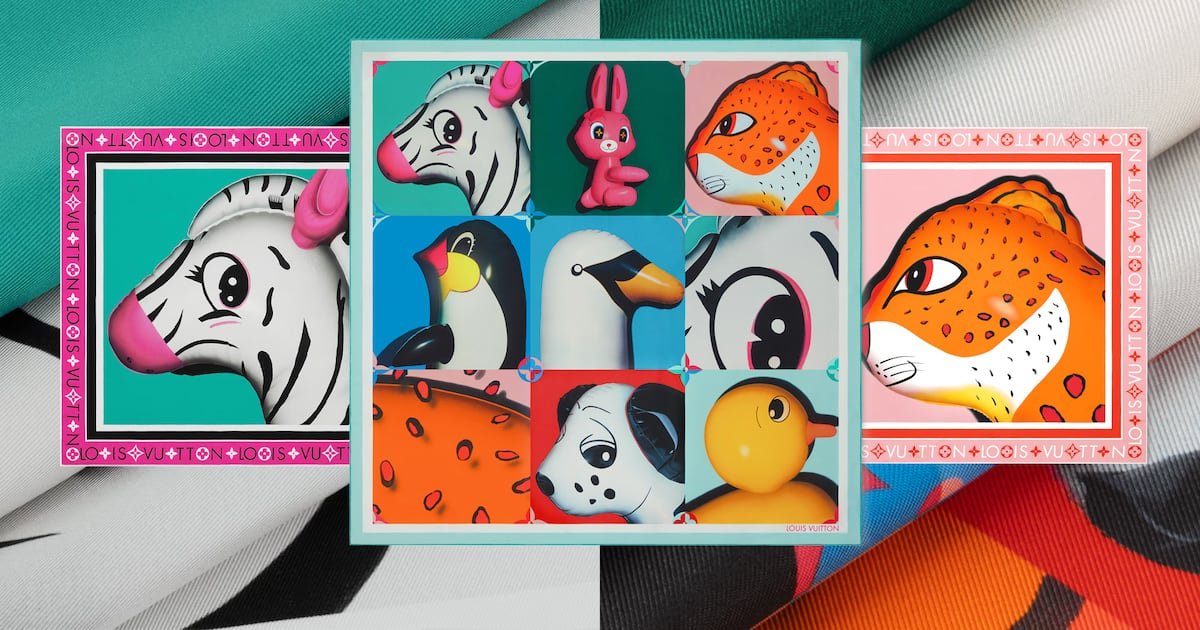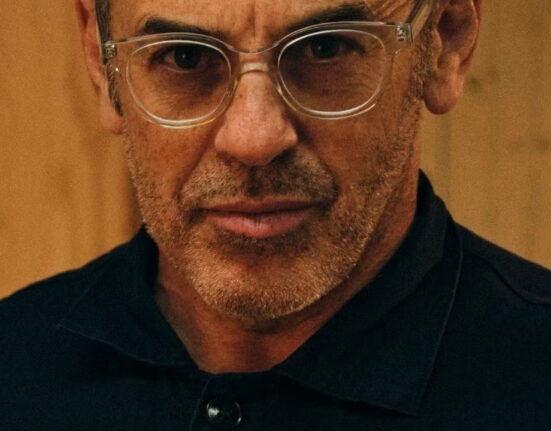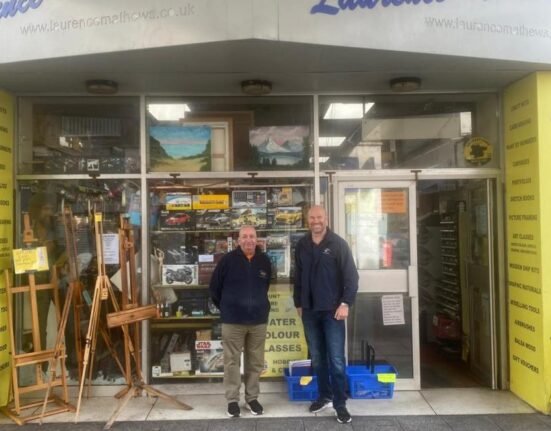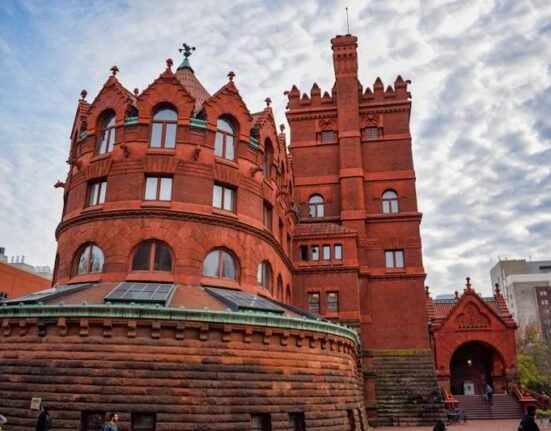In the 13 years since Chanel launched its exhibition at Shanghai’s Museum of Contemporary Art, the French luxury brand has learned a lot about navigating China’s art scene. The “Culture Chanel” show may have satisfied audiences by featuring over 400 iconic pieces drawn from the archives, but the associated film drew criticism from some members of the public for its exoticist approach to Chinese culture.
Today, Chanel’s inroads into China’s art scene are more nuanced — and practical. In May, the brand announced it will increase investment to help restore and upgrade Shanghai’s Power Station of Art, a state-run contemporary art institution that has previously hosted events by Cartier and Shanghai Fashion Week’s Labelhood shows. The partnership, which commenced in 2021, also saw Chanel bring its touring exhibition on Gabrielle Chanel to the museum in July.
Renaud Bailly, Chanel’s president of the North Asia region, has described the partnership as marking “a new chapter in the house’s commitment in China” and contributing to the cultural landscape in Shanghai by “providing a platform to creators and bringing the most illuminating experiences to the public.” But how the brand will measure the initiative’s success in commercial terms remains a mystery.
When pressed to elaborate, a Chanel spokesperson stated simply that the “Chanel Culture Fund is non-commercial,” referring to the global programme of cultural patronage that partners with institutions across Europe, North America and Asia — including the Shanghai museum. Yet marketing initiatives like this are key to achieving its stated ambitions to grow sales in the key market.

Using art to help sell luxury goods is one of the oldest marketing tactics out there, with couturier Elsa Schiaparelli cited as a pioneering figure for her collaborations with surrealist Salvador Dalí during the 1930s and ’40s in Europe. The strategy has become far more transactional in recent years as high-end fashion and jewellery brands flock to international art fairs like Frieze and Art Basel, including the latter’s outpost in Hong Kong, in a bid to expand their client base to more wealthy art buyers.
Luxury brands have not missed their moment to build on this momentum in China, investing ever-greater sums of money to associate themselves with the local art scene. Gucci, Prada, Louis Vuitton, Cartier, Christian Dior, Valentino and others have employed initiatives that range from physical exhibitions to collaborations with local artists. While some brands have generated a lot of marketing buzz with their initiatives, others have underwhelmed audiences by not sufficiently localising art projects. A few have underestimated the risks of cultural patronage in a market as unique as China.
Weighing Up the Risks and Rewards
Mainland Chinese society’s perception of the contemporary art world doesn’t always mirror the West’s due to its development in the post-Cultural Revolution context. Brands must ensure that content and messaging is on point and free of reputational risk for all stakeholders — not just the brand, its art collaborators, loyal customers and the wider public but also the Chinese government, which takes a keen interest in monitoring art.
“Brands need to be extra aware of selecting the artist and their concept directions and the message behind these,” cautioned Garth Chow, director of Chongqing-based consultancy Jingsheng, advising brands to be “extra sensitive about what the market might like or not.”
Focusing squarely on the fashion side of art collaborations might have shielded brands from sensitivities and backlash in the pre-social media era, but that is no longer the case.
Dior, for example, has collaborated with relatively provocative artists like Shanghai-born Xu Zhen, whose conceptual work explores socio-political taboos and consumerism, for a reinterpretation of a handbag. However, it was a seemingly innocuous fashion image at the exhibition Art’N Dior by the photographer Chen Man that brought trouble to the house’s doors. In 2021, the brand had to withdraw the work after netizens reacted negatively to its depiction of Chinese beauty, and the photographer issued a grovelling apology.
The author has shared an Instagram Post.You will need to accept and consent to the use of cookies and similar technologies by our third-party partners (including: YouTube, Instagram or Twitter), in order to view embedded content in this article and others you may visit in future.
Besides not showing enough caution toward or respect for Chinese audiences, other pitfalls to avoid include being seen as a “predator of culture,” said Dr. Federica Carlotto, author of the recently published book “Luxury Brand and Art Collaborations.” Art initiatives “need to be authentic,” otherwise they will be called out in China.
“There are definitely companies saying let’s jump on the bandwagon. But if they are not consistent with relevant messaging to the wider community, they’ll be guilty of ‘art-washing,’” she said, in a comparison with greenwashing, which is used to describe sustainability initiatives that don’t measure up.
Broadly, however, the opportunity for luxury to leverage art in China is an attractive one. According to Carlotto, Chinese society now features “a consumption culture that doesn’t see any conflict between art and luxury” and a younger generation who likes to “raise their cultural capital alongside buying things.”
Timing is also key. In an era of softening demand in China with major luxury groups like LVMH and Kering reporting a slowdown and in the market, art-led marketing activations could help motivate increasingly wary aspirational consumers — but only if they provide a unique, emotional and meaningful way to engage with the brand, experts suggest.
The Race to Preserve, Steer and Channel Culture
“If you create your own foundation, you are in charge of culture. You are enabling discourses and what is relevant to a wider public and local communities,” said Carlotto, explaining the shift towards the creation of global art foundations by luxury brands like Prada, Gucci and Louis Vuitton.
In 2017, the latter introduced Espace Louis Vuitton — an art space highlighting the longstanding relationship between Louis Vuitton and artists — to China’s art capital, Beijing. The project is distinct from the Louis Vuitton Foundation in Paris, opened a few years earlier. By wrapping China into the group’s global art strategy (other Espace outposts exist in Tokyo, Venice and Seoul, for example) at a relatively early stage, the brand paid tribute to China’s art-going public while introducing brand customers and fans to respected international artists.
Prada’s global art strategy started in the 1990s with the formation of Fondazione Prada and was formalised in 2015 with a permanent space in Milan. Only two years later, it repurposed an historic Shanghai residence as a dedicated cultural institution. Helping to requalify historic buildings around the world, Prada took six years to restore Prada Rong Zhai to its current form, a villa with three floors and a surrounding garden. It has an active rota of exhibitions from local and international artists including Li Qing and Michaël Borremans.
“That’s a really big statement to sophisticated consumers in China,” said Jonathan Travers-Smith, founder and CEO of marketing agency Hot Pot China, who recently visited Prada Rong Zhai, noting that the return on investment for such large-scale, long-term projects is often difficult to quantify because brands don’t always identify the right performance indicators to measure it. But broadly speaking, he believes such foundations bring a “sense of mystique and differentiation” to luxury brands in the local market, especially in terms of “sentiment and association.”
Yuan Ning, an advocate for the preservation of Chinese heritage and co-founder of an art and culture salon called Salon Iter, contends that some art-based initiatives can help luxury brands in China to “insert themselves into the local market” and “enhance cultural authority.”
In recent years, there has been a shift towards greater respect for local culture by brands and consumers alike. It is a manifestation of the guochao movement that sees patriotic consumers show their pride by buying locally designed or made goods.
Loewe has harnessed this movement to great effect by leveraging consumers’ growing appreciation for traditional applied arts, say experts. Ning name-checked the LVMH-owned brand’s ceramics-themed exhibition at the Art021 Shanghai Contemporary Art Fair, which presented Deng Xiping’s porcelain artworks and sponsored the creation of a new educational program at the Jingdezhen Ceramic University to preserve the ancient craft. The accompanying video for that initiative was seen on Weibo nearly 8 million times.
This low-key approach chimes with what Ning describes as a shift away from “hype-driven” events to a more thoughtful introspection to rediscover stories from the artisans behind the craft. “For brands to continue to last in China, no matter who they are, they have to tap into the heritage and culture angle, no matter if it’s in real estate like old cultural heritage sites or intangible cultural heritage,” she said.
Ning’s advice is simple: follow the interests of the high-net-worth art buyers and collectors who are going “back to their heritage” and have growing interest in traditional art, ceramics and pottery. They can be found at art fairs, which have expanded their presence in China, offering luxury brands ample scope to connect with highbrow consumers. This year’s Art Basel Hong Kong, sponsored by LVMH’s Ruinart, drew 75,000 visitors in March. June saw the eighth edition of Gallery Weekend Beijing in the city’s historic 798 Art District.
Local luxury brands have also started to get in on the action. “There’s a shared sensitivity … between women in art and fashion, people who value art and [our] brand,” said Ian Hylton, president of Chinese womenswear brand Ms Min, who took part in Shanghai’s art fair Art021. Founded by Min Liu, Ms Min has numerous clients from the art world, many of whom were introductions from curators such as Pearl Lam or Vanessa Guo.
The Popularity of Applied Arts Projects
Luxury brands have been upping their investment in branded exhibitions in China so much in recent years that observers say the market is showing early signs of fatigue.
Loewe managed to inject excitement into this jaded format in March when Crafted World opened at the Shanghai’s Exhibition Centre. It won fans for its overt appreciation of heritage and featured, among other international artists’ work, a sculpture from 2023 Loewe Craft Prize finalist Huang Wanbing, a Shanghai-based multidisciplinary artist and fashion designer.
According to Chow, Loewe’s exhibition had the edge over previous art-based shows, such as Dior’s touring exhibitions where it invites artists to reinterpret signature pieces. In his words, Dior’s shows are “engaging” but Loewe’s exhibition was more “on point,” approachable and received more attention from younger audiences. When spectators left Loewe’s show, the emotional connection was strong enough that many were left wanting to buy mementos like keychains, wallets or T-shirts.
“Whereas the Lady Dior exhibition drew a distance between who’s buying Dior normally and who’s buying their collectible art pieces, Loewe brought it to the public,” said Chow.
Dior and Loewe both declined BoF’s request for comment.
“Loewe is the new benchmark for how brands should be leveraging the art scene to build brand equity,” said Tanguy Laurent, creative director of Shanghai’s creative studio TLCD, citing alignment between the brand’s initiatives and “the revival of local artisanry” driven by “growing cultural confidence and the government’s promotion of the Chinese craftsmanship spirit,” among other things.
In a very different manner, Gucci’s Art Wall in Shanghai — one of five across global cities — has gone a step further by engaging the general public. The 2022 street-art initiative asked fans to submit their own artworks, with tangible results in a mural. At the time, it reportedly generated over 500 million views for the hashtag #BloomingShanghai thanks to the brand’s partnership with a constellation of local celebrities who amplified the campaign on their Weibo accounts.
The author has shared an Instagram Post.You will need to accept and consent to the use of cookies and similar technologies by our third-party partners (including: YouTube, Instagram or Twitter), in order to view embedded content in this article and others you may visit in future.
The Italian brand used outdoor murals a few years earlier in the city, promoting an exhibition it supported at the city’s Yuz Museum called “The Artist is Present,” which featured a portrait of the artist Marina Abramovic.
Combining Patronage With Artist Collaborations
Louis Vuitton has a long history of collaborating with artists for its products, from its 1980s scarves printed with artwork from the likes of Sol LeWitt to the landmark Stephen Sprouse collection of graffiti-inspired logo bags and later collections featuring work by veterans like Takashi Murakami, Yayoi Kusama and Jeff Koons.
But since China skews younger than most luxury markets, so too does the audience brands must appeal to. This means artists who reflect that demographic should be considered, Chow suggests. Cue Louis Vuitton’s women’s pre-fall show in Shanghai where women’s artistic director Nicolas Ghesquière opted to work with 32-year-old Beijing artist Sun Yitian, who is known for her disembodied dolls. The Louis Vuitton products featuring her animal artwork ranged from clothing to accessories and debuted at a show held in the Long Museum. The series was then blown up to cover the facade of K11 Art Mall.
“[With this move] they’re saying we are speaking your language, and it’s cooler than before … It’s a new way to tell consumers [in China] ‘we care about the market and the young generations,’” Chow said.
Louis Vuitton declined BoF’s requests for comment.
Hermès, which has recently shown more resilience in the China market than some of its peers, has taken a slightly different route. Its latest collaboration with the artist Song Dong on window displays in Shanghai blurred the boundaries between the store and a gallery, generating what Travers-Smith describes as a positive “halo effect.”
“The role of merchandising in the store with a known artist gives a unique, standout look beyond marketing. It’s an association for the brand and everywhere you look through the store, it’s elevated by that artist.”
But in China’s fast-paced, dynamic cultural sector, it is often hard to know where to invest and which art-led model to prioritise.
According to Laurent, dedicated art destinations like those operated by Louis Vuitton and Prada can lose their shine over time. Even projects as successful as Prada Rong Zhai have their limitations. “Its impact is intense but yet not spread out. Also, repetition is a cue when you dedicate a set space for exhibitions,” he said, suggesting that a permanent location might not always be advantageous.
Jacques Roizen, managing director of consulting firm DLG China, echoes that sentiment. Temporary art exhibitions organised by luxury brands, such as Gucci and Chanel, have the advantage of being “more spectacular and exceptional,” he said, in comparison to the approach of “maintaining a permanent art museum, especially in the Chinese market, where consumers are always looking for the greatest and the latest.”






